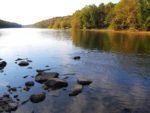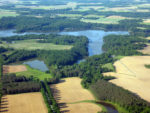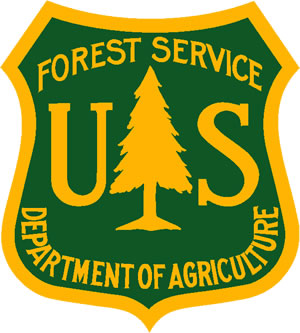Why Forest Buffers?

Water Quality
Forest buffers act as natural filters and are often the last line of defense, protecting streams and ultimately the Chesapeake Bay from polluted runoff. Forest buffers protect streams and local drinking water supplies by helping to intercept and process excess nutrients, sediments, and pathogens from entering them. Studies have shown that streams bordered by forest are up to 2-8 times more effective than those with grass borders in processing important substances, like excess nitrogen (Sweeney and others 2004).

Climate Resilience
In addition to improving water quality, riparian forest buffers can also help ecosystems and communities adapt to the projected changes in climate. For example, as the temperature warms, planting trees can provide important cooling benefits for people and wildlife. Many aquatic species, like brook trout, require cool water temperatures. As the climate warms throughout the watershed, planting and maintaining riparian forest buffers to shade streams will help increase available habitat for aquatic species that need cool water.
As forests have higher rates of infiltration and evapotranspiration than other land cover types (Eisenbies and others 2007), increasing forest cover can reduce the amount of stormflow reaching streams and communities. Restoring riparian forests in middle or upper sub-basins can also reduce downstream flooding by desynchronizing the flood peaks coming from different sub-basins (Dixon and others 2016). Strategically restoring forests can therefore help protect communities, infrastructure and ecosystems from the damaging impacts of flooding, which is likely to become more common as the climate changes.

Economic Benefits
Forest buffers can provide important economic benefits for farms, such as improved herd health and valuable assistance for alternate water, fencing and crossing. Forest buffers can enhance property values, prevent erosion and property loss from sloughing banks, regulate base flow of water to streams, and provide woody debris and wider stream channels for reducing downstream flooding.
In addition to the direct economic benefits, realizing our RFB goals at scale will not only require knowledgeable foresters, but leagues of restoration workers in both rural and urban areas that can help with project planning, implementation, and maintenance. By supporting local businesses and entrepreneurs while generating jobs, forest buffer restoration can grow local restoration economies.

Recreation and Human Health
Forest buffers enhance recreational opportunities, including fishing, bird watching, hunting, hiking, and exploration with children and grandchildren. Numerous studies show significant human health benefits from recreating in forests or looking at trees, including:
- increased immune system function,
- lower blood pressure,
- lower stress,
- improved mood,
- increased ability to focus,
- accelerated recovery from surgery or illness,
- increased energy level, and
- improved sleep.

Habitat
Forest buffers restore the natural in-stream conditions of temperature, oxygen, and food (algae, leaf litter), and stabilize and widen stream channels. The widening of channels creates more habitat and a better-functioning, healthier ecosystem per unit length of streambed. Forest buffers help increase the diversity and abundance of fish food (aquatic macroinvertebrates, for example). They do this directly, by shedding leaves into streams, and indirectly, by providing optimum light and temperature conditions for growing the algae preferred by macroinvertebrates. Streamside forests also create cooler, clearer, wider, more stable streams favored by native species of fish like brook trout while providing important habitat for birds, like wood ducks.


